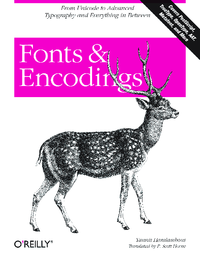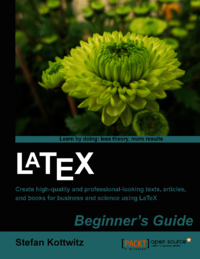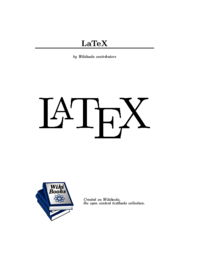Etiqueta "TeX"
Se han encontrado 4 Coincidencias
Fonts and Encodings
Tipografía digital
108 Visitas | 210 Descargas | 2013-10-01 05:41:58 | rmartinez
This reference is a fascinating and complete guide to using fonts and typography on the Web and across variety of operating systems and application software. Fonts and Encodings shows you how to take full advantage of the incredible number of typographic options available, with advanced material that covers everything from designing glypsh to developing software that creates and processes fonts. The era of ASCII characters on green screens is long gone, and industry leaders such as Apple, HP, IBM, Microsoft, and Oracle have adopted Unicode Worldwide Character Standard. This only solves part of the problem, as a multitude of font standards and tools remain between the numeric character codes and their presentation. This book explores how those pieces fit together. Yannis Haralambous was born in Athens (Greece) in 1962. He moved to France in 1979 to study at the Université de Lille I, where in 1990 he completed his doctoral dissertation in pure mathe- matics. After a brief period at INALCO and several years of self-employment, in 2001 he joined the faculty of ENST Bretagne, in Brest (Brittany), where he teaches computer science. He does his research in the fields of digital typography (especially for the languages of East Asia), internation- alization, and the electronic book. He has been the co-developer of Omega, a successor to TeX, now merged into the very promising luaTeX.

LATEX Beginner's Guide
Latex
157 Visitas | 171 Descargas | 2014-03-05 15:31:07 | eancedeg
LaTeX Beginner's Guide offers you a practical introduction to LaTeX. Beginning with the installation and basic usage, you will learn to typeset documents containing tables, figures, formulas, and common book elements like bibliographies, glossaries, and indexes. Lots of step-by-step examples start with fine-tuning text, formulas and page layout and go on to managing complex documents and using modern PDF features. It's easy to use LaTeX, when you have LaTeX Beginner's Guide at hand. This practical book will guide you through the essential steps of Latex, from installing LaTeX, formatting, and justification, to page design. Finally, you will learn how to manage complex documents and how to benefit from modern PDF features. Right from the beginning, you will learn to use macros and styles to maintain a consistent document structure while saving typing work. This book will help you learn to create professional looking tables as well as include figures and write complex mathematic formulas. You will see how to generate bibliographies and indexes with ease. Detailed information about online resources like software archives, web forums, and online compilers complement this introductory guide.

LaTeX
Extensive tutorial on LaTeX typesetting system prepared on Wikibooks
114 Visitas | 136 Descargas | 2014-03-05 19:53:16 | eancedeg
TeX (pronounced “Tech”, with “ch” like in the Scottish “Loch”; see below for de- tails on pronunciation) is a markup language created by Donald Knuth to typeset documents attractively and consistently. It’s also a Turing-complete programming language, in the sense that it supports the if-else construct, it can calculate (the cal- culations are performed while compiling the document), etc., but you would find it very hard to make anything else but typesetting with it. The fine control TeX offers makes it very powerful, but also difficult and time-consuming to use. Knuth started writing the TeX typesetting engine in 1977 to explore the potential of the digital print- ing equipment that was beginning to infiltrate the publishing industry at that time, especially in the hope that he could reverse the trend of deteriorating typographical quality that he saw affecting his own books and articles. TeX as we use it today was released in 1982, with some slight enhancements added in 1989 to better support 8-bit characters and multiple languages. TeX is renowned for being extremely stable, for running on many different kinds of computers, and for being virtually bug free.
Contribuir
Usted puede contribuir con Libros UCLV, es importante para nosotros su aporte..
Contribuir